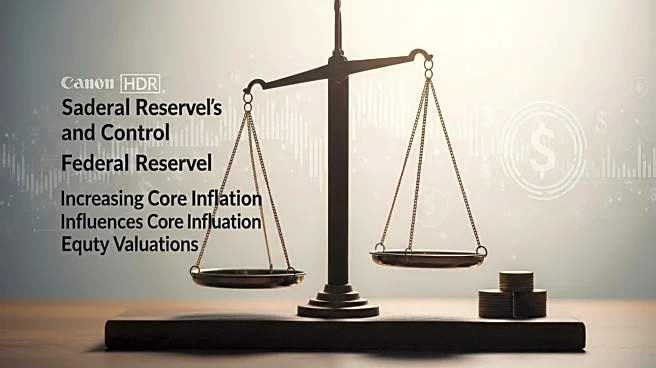What's Happening?
The Bank of Korea (BOK) is contemplating a 25-basis-point rate cut in October 2025 as South Korea's inflationary pressures ease. The consumer inflation rate dropped to 1.7% year-on-year in August 2025, the slowest pace in nine months, largely due to reduced communication costs. The BOK's revised inflation forecast for 2025 is 2%, suggesting room for monetary easing. However, the central bank remains cautious due to housing market volatility and household debt risks, which complicate the path to a rate cut. The BOK has maintained its benchmark rate at 2.5% for the second consecutive meeting, prioritizing housing market stability over immediate easing.
Why It's Important?
A potential rate cut by the BOK could benefit sectors sensitive to borrowing costs, such as technology and consumer discretionary stocks, by reducing financing expenses and stimulating domestic demand. However, export-dependent industries like semiconductors and automobiles may face challenges due to U.S. tariffs and weak global demand. The decision reflects the BOK's strategy to balance growth support with long-term financial resilience. Investors are advised to adopt a barbell strategy, focusing on defensive sectors while hedging against export sector volatility.
What's Next?
The BOK's decision in October will depend on the sustainability of inflationary relief, household debt trajectory, and resolution of U.S. tariff uncertainties. A rate cut would align with the BOK's strategy of supporting domestic demand while mitigating financial imbalances. Further easing is likely by year-end 2026. Investors should remain vigilant, leveraging data-driven insights to capitalize on emerging trends.
Beyond the Headlines
Real estate markets may shift as capital redirects toward real estate investment trusts (REITs) and rental assets due to constraints on direct property investments. The South Korean won's depreciation against the U.S. dollar has heightened currency volatility, emphasizing the need for hedging strategies.












